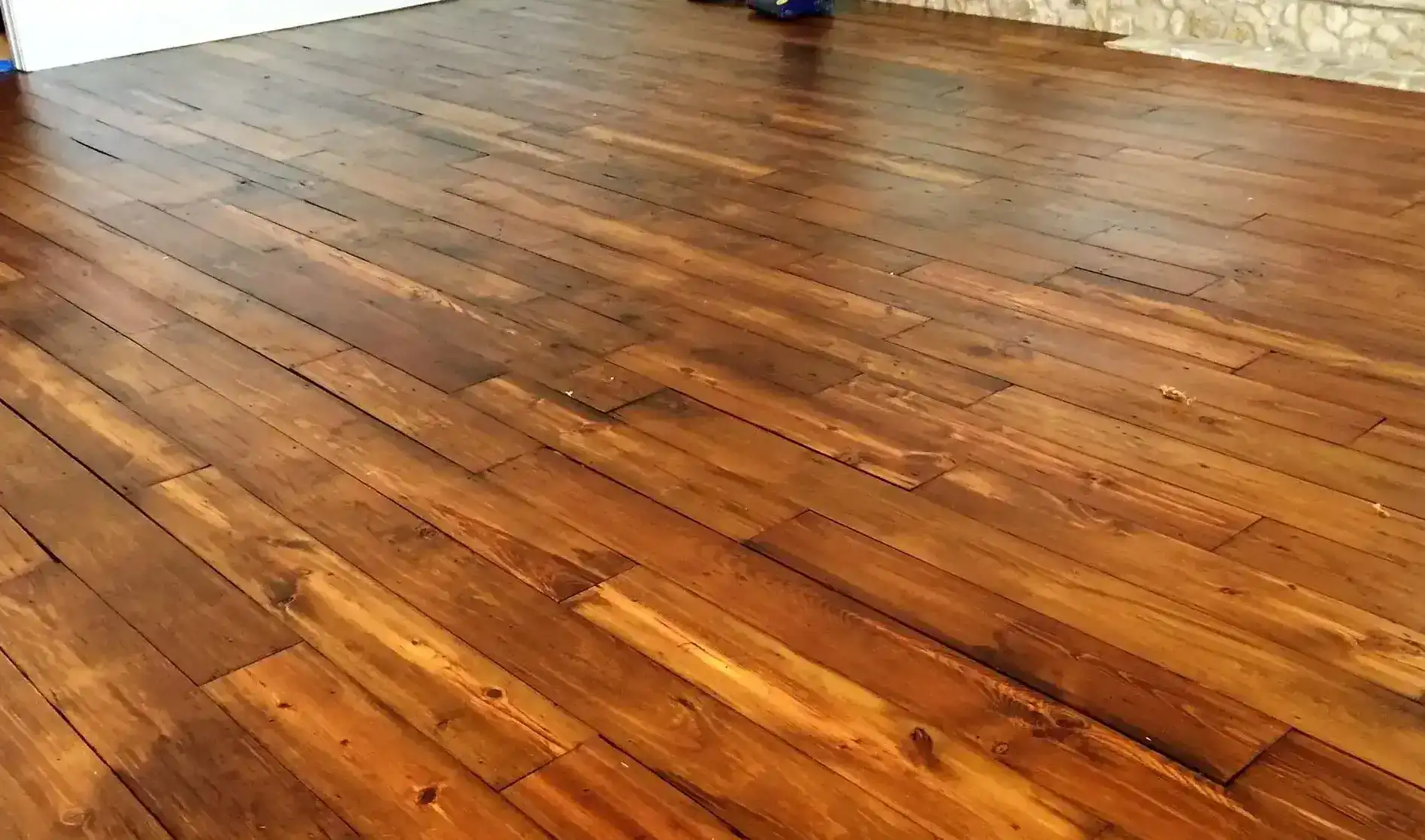Reclaimed wood flooring is now probably one of the flooring types most favored by those homeowners who truly appreciate the sustainable lifestyle, charm, and individuality associated. Its unparalleled natural beauty and enormous environmental weight fit somewhere in between contemporary and traditional interior design decisions.
If you are planning to buy a renovated wooden floor this year, there is a wide follow-up on a widely renovated wooden floor on everything: What is included, what are the costs, and most importantly, why it should be an A-list idea.
LEARN ABOUT THE COSTS, ADVANTAGES, AND INSTALLATION OF THE WOODEN FLOOR RECOMMENDED IN 2025, AS WELL AS WHY IT IS A SMART, ENVIRONMENTALLY FRIENDLY OPTION FOR YOUR HOME!
What is Reclaimed Wood Flooring?
The reclaimed wood floor is flooring taken from some old structure, barn, or warehouse, which is then turned into flooring planks. It goes through the cleaning and repairs process afterward to be cut into planks. Each plank inherits its mark on history, giving it a unique look that cannot be obtained from new wood. It is a process that is really costly and laborious as well.
Current Pricing and Cost Considerations for 2025
The wood finish of your beautiful hardwood floor is greatly affected by the gray color. Therefore, older wood floors might display gray, giving a spectacular sight.
Material Costs
Reclaimed timber generally has a price range of about $5 to $20 per square foot, depending on the source and grade of wood. It normally averages between $8,000 and $10,000 for a 1,000-square-foot area, similar to midrange new hardwood or engineered wood floors.
Installation Costs
The average installation cost for the wooden floor covered, including materials and work, measures $9.00 per square foot. It is highly recommended due to the unique characteristics and potential challenges presented by working with a professional installation.
Cost Comparison
The cost of new hardwood averages between $4-$6 per square foot with regard to installation. Materials can range from about $5-$20, plus an additional $3-$8 for installation. Most reclaimed woods are likely to be expensive because of the details involved and scarcity on the market, not to mention the processing effort involved in making reclaimed wood ready for installation.
Why Choose Reclaimed Wood?
Reclaimed wood is one stylish green option. If trees aren’t cut down for new wood, forests are being saved. Pollution due to new wood processing is greatly reduced. It also saves otherwise valuable resources from being needlessly dumped in landfills and supports green building initiatives like LEED certification.
Environmental friendliness is not all about reclaimed wood. The different natural weathering, nail holes, and saw marks make each plank a unique item as time passes. It is strong, designed to withstand the test of time, and less prone to warp thanks to natural seasoning taking place over decades. Converted, it will raise the resale value of your home, especially among potential buyers inclined towards green upgrades for their homes.
Challenges to Keep in Mind
Negative aspects can be found in reclaimed wood. Its character and nature are dependent upon the dismantling of old structures. Some species are then hard to come by due to limited availability. As boards come in many sizes, thicknesses, and shapes, sometimes, preparation can be even more tedious.
Installation is another consideration; hidden nails, irregular dimensions, and unique surface textures require the skills of experienced installers. Expert Construction Takeoff Services recommends ordering at least 10% more than you think you’ll need to account for waste and tricky cuts.
Types and Sources of Reclaimed Wood
Main sourcing includes barn wood, factory floorboards, warehouse planks, and wood salvaged from historical buildings. Specialty offerings would include anything from wine barrel staves to reclaimed railroad ties.
Popular species include:
- Chestnut: Rot-resistant and beautiful.
- Heart Pine: Known for its amber tone and tight grain.
- Oak: durable with classic grain patterns.
- Douglas Fir: Strong and distinctive.
Installation and Maintenance Tips
Before one begins the installation of the flooring, the condition of stability, moisture content, and contaminants of the floor should be inspected. Most of the time, reclaimed woods require a longer acclimatization period than newly cut timber.
Nail-down works well for most subfloors, while glue-down is better for concrete. Floating floors are rare with reclaimed wood because plank sizes can vary.
Maintaining is similar to a brand-new hardwood floor. Regular sweeping, immediate cleaning of spills, and refinishing after 7 to 10 years, depending on wear, are the maintenance requirements. Keeping indoor humidity levels constant will help to diminish the amount of floor expansion and contraction.
Design Trends in 2025
Wide plank, reclaimed floors exhibit an undying preference to display natural grain and texture. Mixed-width installations are, however, gaining momentum for their design factor. Authenticity over sanding to a ‘new’ finish, which has seen many homeowners leaving the patina of the wood in its original form.
Popular finishes are warm neutrals and rich walnut oil tones, revealing the beauty of the wood in its natural state.
Choosing the Right Supplier
Choose suppliers that have impeccable documentation on the source of the wood, treatment undergone, and moisture testing results. Avoid those that tend to offer very low prices without any references. Good reclaimed wood should be supplied by businesses that have consistent salvage partnerships and proper storage facilities.

